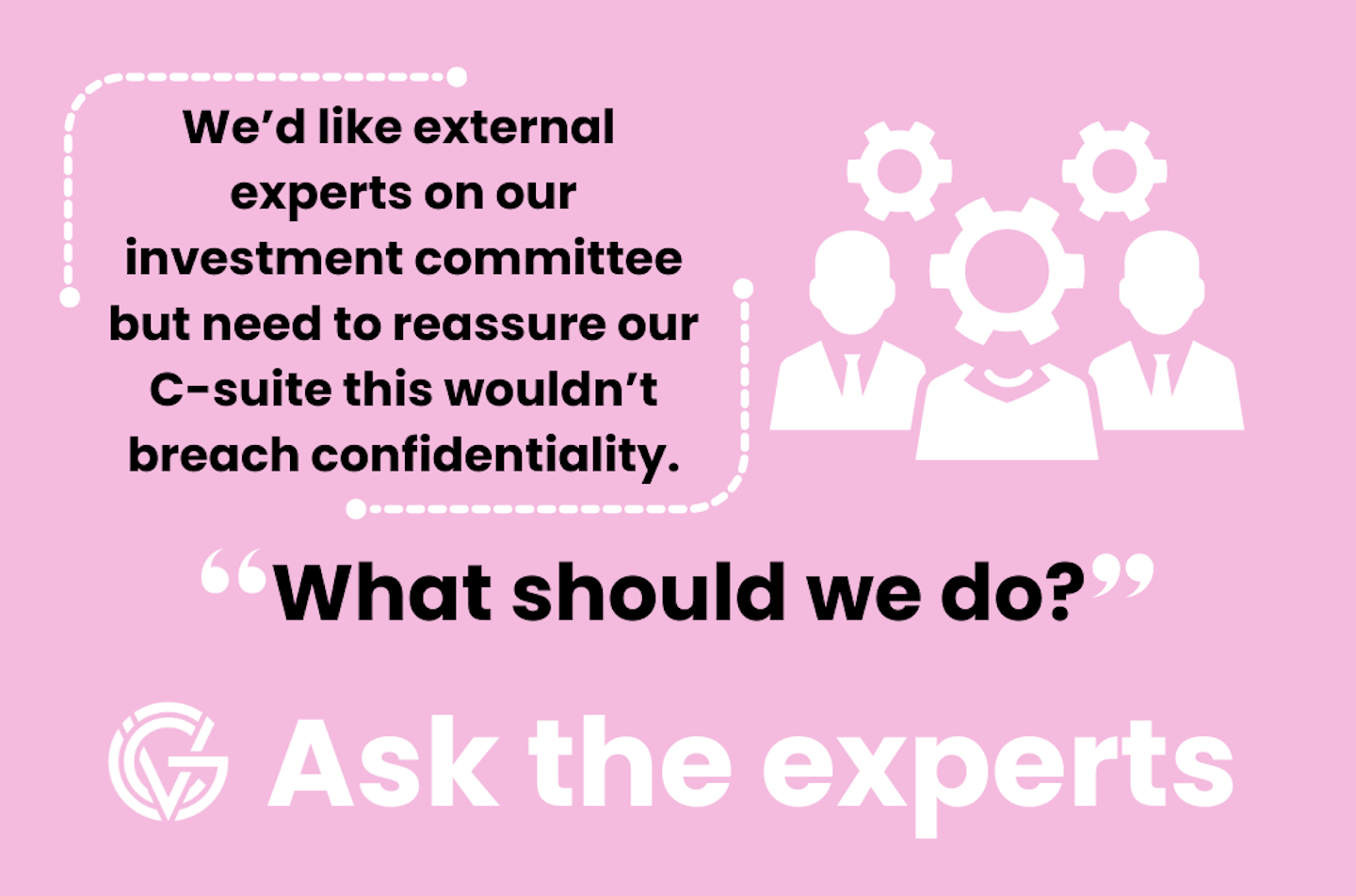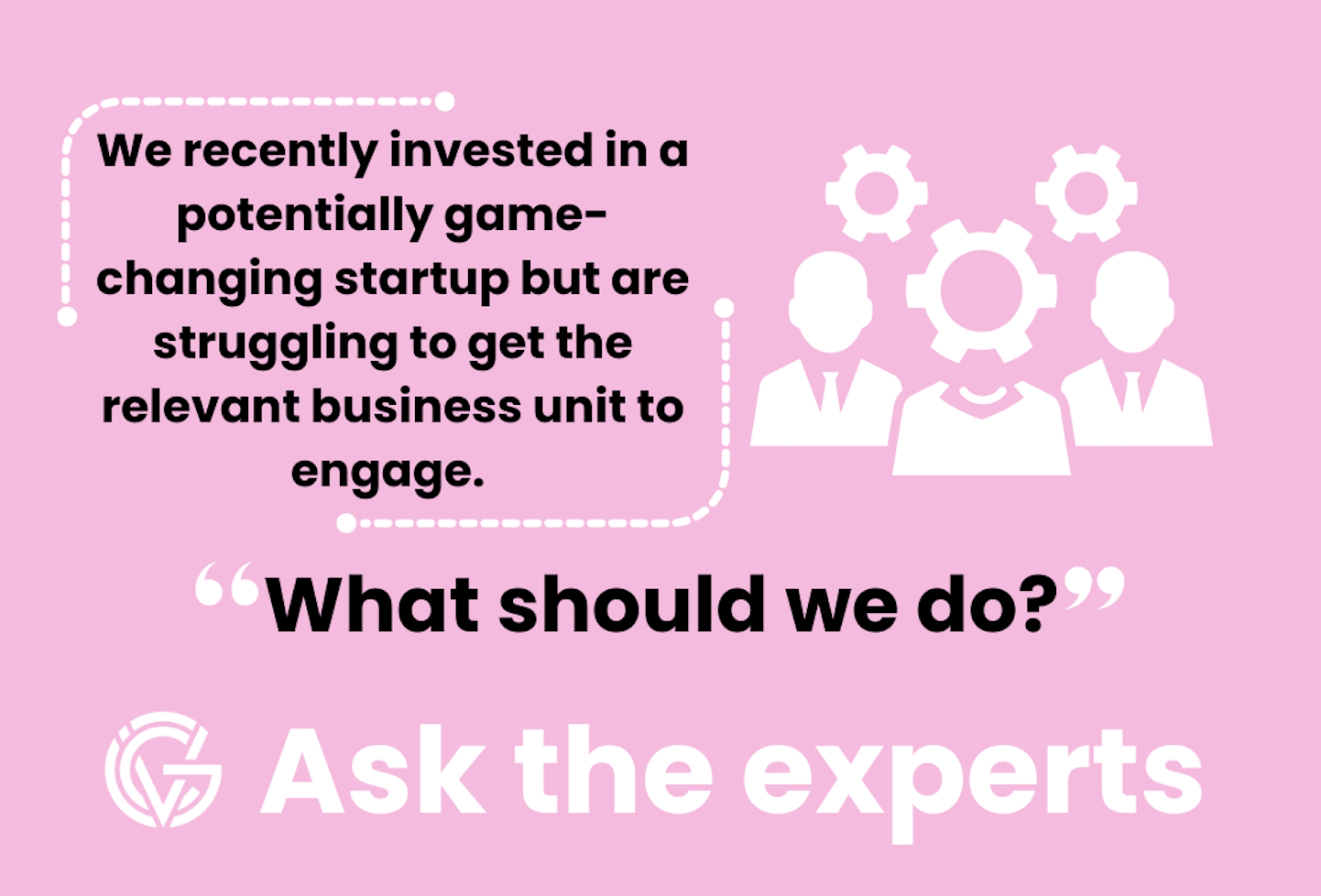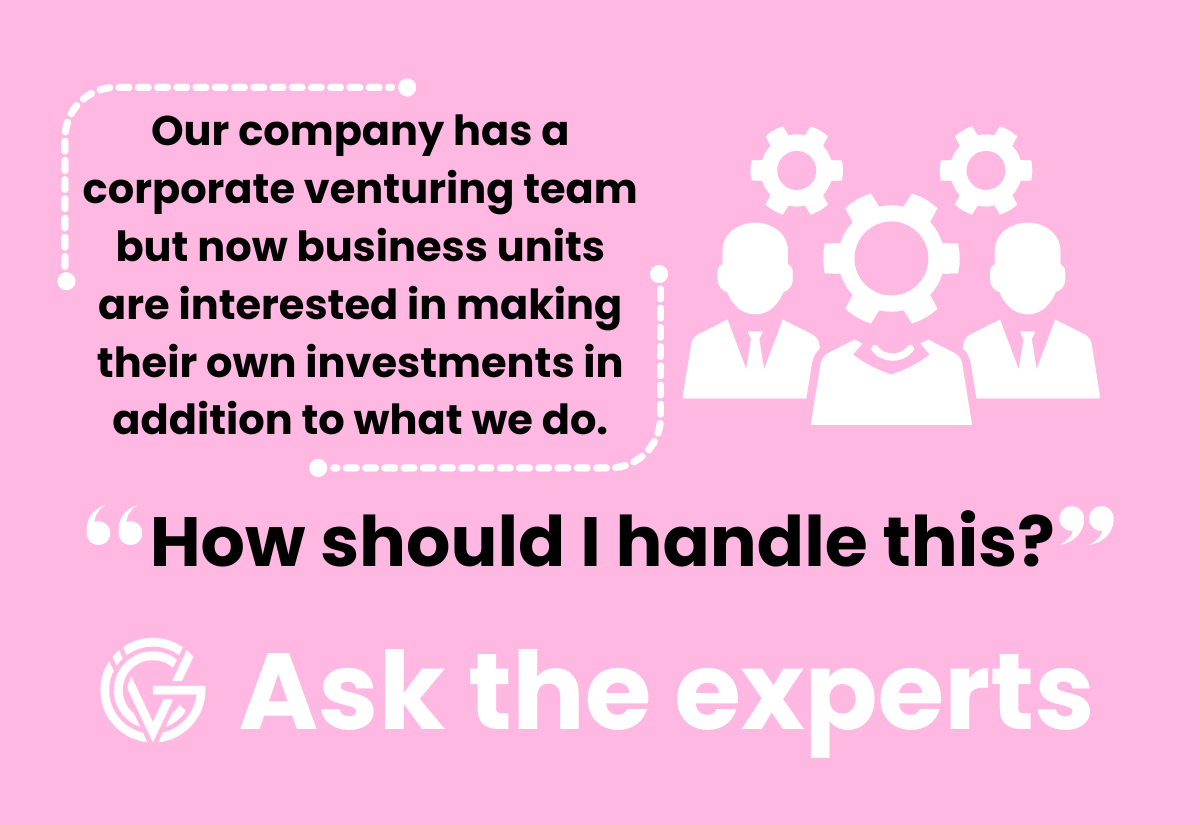Sometimes a startup might directly disrupt the business of a corporate business unit. How much can CVC units reveal about these plans?

This is a monthly column in which readers can ask our network of experienced corporate venturing professionals about how to handle the common dilemmas of CVC practice.
If you would like to submit a question email us here.
The question:
“We invested in a company which has the potential to disrupt an established business unit. How should we manage communications with the unit while avoiding conflicts of interest?”
The expert views:

Ideally, the CVC made the investment in response to a need defined by a business unit or the corporation. However, if investment is a surprise to the business unit, CVCs should discuss their purpose and mandate — to help the company innovate, find and effectively pursue growth opportunities, identify (external innovation) solutions to disruptive and other competitive threats.
Explain why the startup was compelling in this light, why the investment made sense, the potential opportunities it may create for the unit, and how the unit may interact with the startup — without disclosing any confidential information to the business unit.
If the business unit wants to engage with the startup, introduce both parties and let them figure out what information they want to share. Standard practice is for the business unit and startup to sign mutual NDAs. The NDA typically indicates what information is shared and the scope of discussions. If there’s any future collaboration, a collaboration agreement is executed between the two parties. The venture unit is a facilitator but doesn’t need to manage the communications between the two parties. This avoids potential conflicts.
“If the CVC has a business development team, that team can be a buffer between the investor and the business unit.”
Remind both the business unit and the startup CEO that corporate venture investors are under agreement to protect confidential information of their startup investments. This ensures that startup information doesn’t flow to the business units. Investors should make sure they don’t get any confidential information from the business unit, given their role.
If the CVC has a business development team, that team can be a buffer between the investor and the business unit. The business development team can be positioned to work directly with the business units, while investors work more directly with startups. This structure also helps investors avoid potential conflicts.
In summary, clear and proactive communication, disclosure of interests, and a strong CVC operating model (with appropriate NDAs) help to maintain trust and keep potential conflicts to a minimum.

Communication is the operative word, particularly for the majority of CVCs that invest beyond the scope of existing businesses. Though some CVCs make investments to enhance existing business innovation, GCV Keystone benchmarking data highlights that most CVC charters prioritise ‘transformative innovation,’ with preparing for future disruptions (Horizon 3) and creating new businesses (Horizon 2) top-rated for 70%.
“Regularly sharing emerging market insights, portfolio and pipeline is a good way to minimise ‘surprises’.”
Internal communications around particular investments are often best handled as part of a broader, multi-level plan that includes:
• Articulating the CVC charter – and ensuring both executive and business unit alignment on the CVC unit role in corporate innovation strategy. If it’s not written down, discussed and agreed upon – there will be no institutional memory.
• Consistently and broadly reinforcing the CVC strategy and value. Regularly capturing and sharing emerging market and ecosystem insights, portfolio and pipeline is a good way to minimise ‘surprises’.
• Taking a seat at the business unit strategy table and providing input to business unit strategies and roadmaps. Adopting new technologies and business models is often a timing question. Today’s perceived competitor may be tomorrow’s partner, acquisition target or avoided failure.

Your communication with the business unit should be the same as it should have been prior to the investment: limited and narrow.
If the startup company and your corporate business unit are competitors in the market, you can’t play on both sides of the fence. If your job is ‘investor’, then you need to only be on the side of the fence that includes the startup. If you try to play both sides, there will inevitably be hurt feelings (at best) and leakage of confidential information (at worst).
“A corporate venturing unit is not ‘market intelligence’, aka corporate espionage, for the business unit.”
A corporate venturing unit is meant to give optionality for the parent corporation in the future for commercial partnerships, contract manufacturing partnerships, M&A and so on. It is not ‘market intelligence’, aka corporate espionage, for the business unit.
Previously on Ask the Experts:

The bottom line: Standard safeguards like non-disclosure agreements should help, but some companies may never be comfortable with this. You can also get that “external” support in other ways.
Read the full advice from Amy Burr, JetBlue Ventures; Fred Schonenberg, VentureFuel; Vinay Solanki, Channel 4 Ventures; and Liz Arrington, GCV Instutute.

The bottom line: You can’t force them to engage — but make sure you share success stories and play on their fear of missing out.
Read the full advice from Gen Tsuchikawa, Sony Ventures; Crispin Leick, EnBW New Ventures; Liz Arrington, GCV Institute

The bottom line: If it’s a great investment , steal it. If it’s a terrible one, kill it. If it’s somewhere in the middle, be helpful and keep lines of responsibility clear.
Read the full advice from David Stevenson, MSD Global Health Innovation Fund, James Loftus, PayPal Ventures and Liz Arrington, GCV Institute.

Maija Palmer
Maija Palmer is editor of Global Venturing and puts together the weekly email newsletter (sign up here for free).







